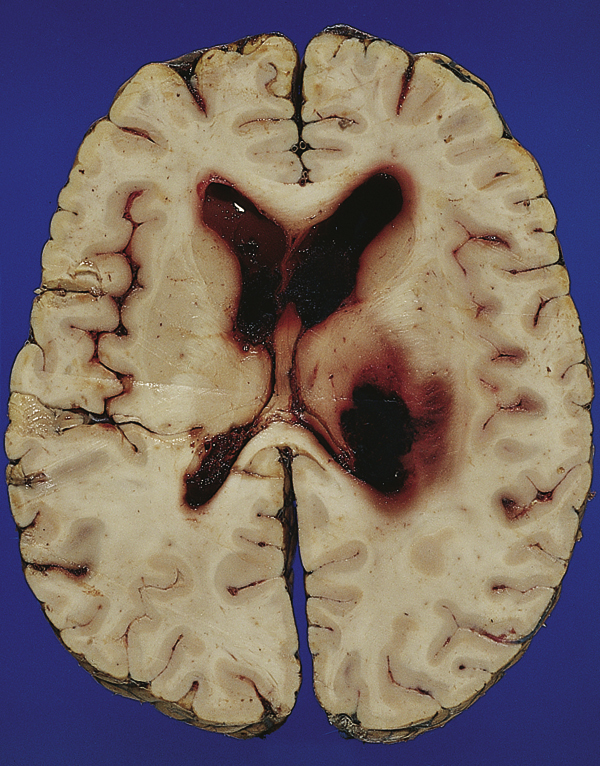cerebral hemorrhage [L, cerebrum + Gk, haima, blood, rhegnynei, to burst forth] , a hemorrhage from a blood vessel in the brain. Three criteria used to classify cerebral hemorrhages are location (subarachnoid, extradural, subdural), kind of vessel involved (arterial, venous, capillary), and origin (traumatic, degenerative). Each kind of cerebral hemorrhage has distinctive clinical characteristics. Most cerebral hemorrhages occur in the region of the basal ganglia and are caused by the rupture of a sclerotic artery as a result of hypertension. Other causes of rupture include congenital aneurysm, cerebrovascular thrombosis, and head trauma. ▪ OBSERVATIONS: Bleeding may lead to displacement or destruction of brain tissue. Extensive hemorrhage is usually fatal. Depending on the extent and the location of the damaged tissue, residual effects may include aphasia, diminished mental function, hemiplegia, or disturbance of the function of a special sense. ▪ INTERVENTIONS: A computed tomography scan may be performed to locate the lesion and to differentiate the hemorrhage from an embolus or thrombus, or cerebral angiography may be used for these purposes. Lumbar puncture may be performed to reveal blood in the spinal fluid if subarachnoid bleeding is suspected, but computed tomography must be performed first because of the risk of brain herniation if high intracranial pressure is present. Surgery is sometimes necessary to stop the bleeding and to prevent death from greatly increased intracranial pressure, although it has not been shown to improve long-term outcome. Treatment is usually supportive.

